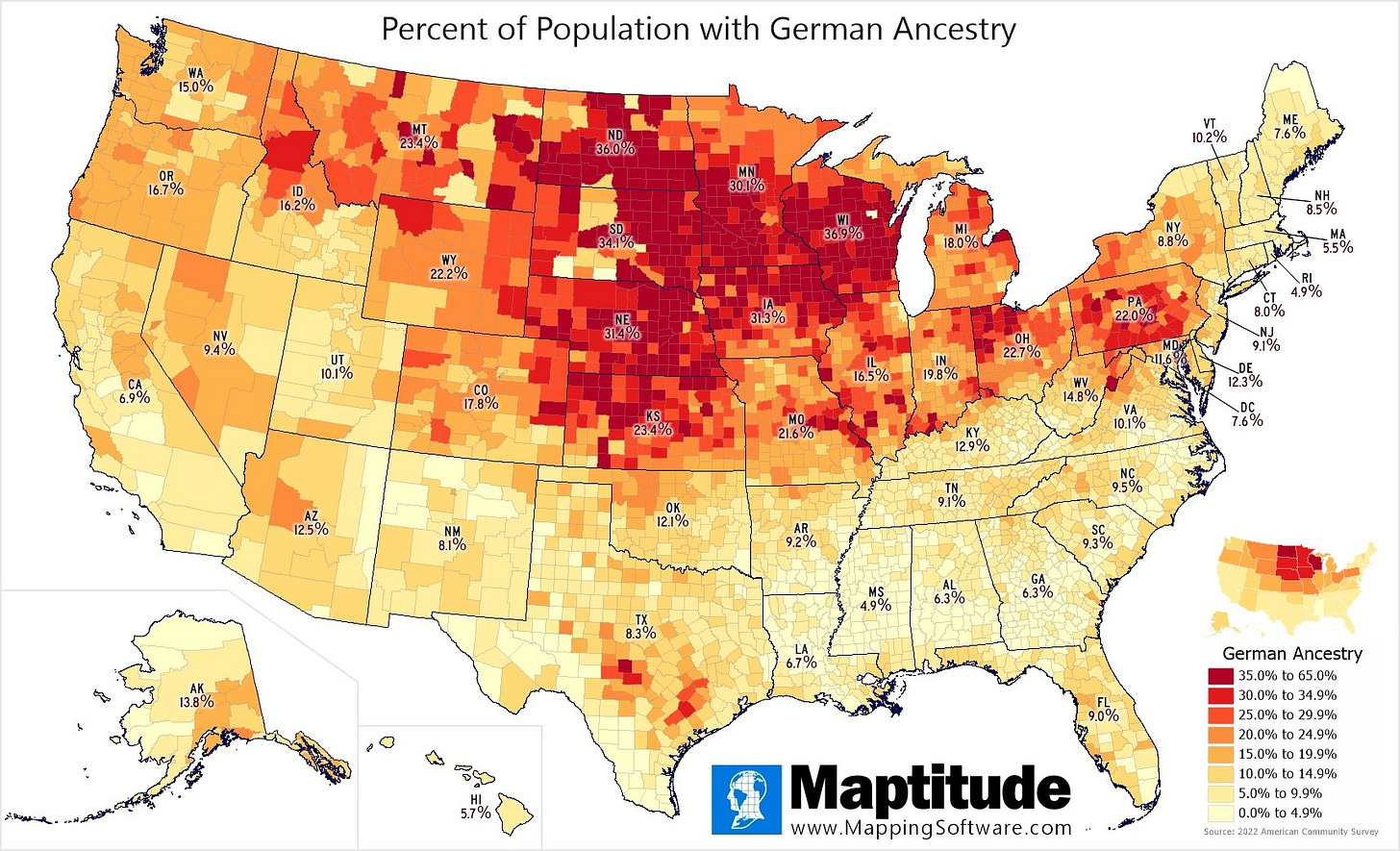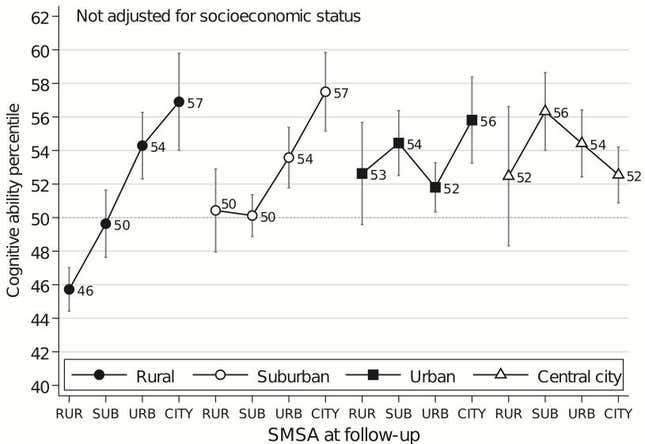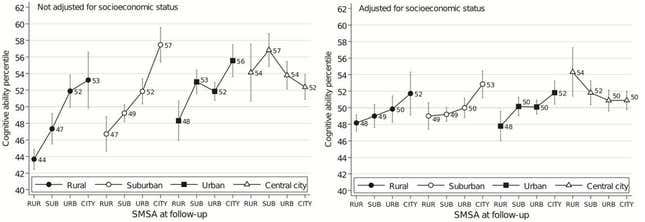it's not a "housing" shortage, and YIMBYs won't fix it.
There is another shortage, though...
I hate zoning. I want to live in a wizard tower, and I am being prevented from doing so by a legion of NIMBY Karens.
On a purely aesthetic level, I hate the idea of suburbia. Cookie cutter houses as far as the eye can see? Blegh! I love the idea of mixed-use developments, where you can run a yoga studio out of your living room, or sell lemonade on the sidewalk. Psychologically, NIMBYs are bureaucratic busy bodies who are selfishly protecting their equity by locking young people out of the market.
I generally support reducing zoning laws because I think it will be good for the economy. Specifically, it will be good for me as a non-homeowner, because it means I won’t have to spend as much money on rent. But there is a cost to deregulation, which YIMBYs don’t often talk about.
Moses Sternstein over at Random Walk has a series of paywalled articles breaking down exactly what YIMBYs miss.
I would not be the man I am today without Mr. Sternstein. I strongly suggest that you subscribe to Moses if you want the full expert opinion and access to all his cool graphs. You should pay him, as I do, because he deserves to be paid for saying things which are brave and true.
People get really angry when you suggest that YIMBYs are not telling the whole story.
Despite hearing about YIMBYs and NIMBYs on a daily basis, I’ve never heard the Random Walk argument before, so I’m suspecting that most of you haven’t heard it either. I am going to go farther than Moses and explain the root causes of the “real shortage,” which he politely and humbly avoids, because it involves being a bit edgy and rude.
Economic policies involve trade-offs. Even if you are a YIMBY, it’s important to be honest about why NIMBYs exist and what bad things would happen if zoning was abolished. You can still maintain that zoning abolition would be a net good, but your case is weaker if you are ignorant of the negative consequences.
Bullet-points for your reading pleasure:
There is a housing shortage in desirable areas. But that’s a “desirable area” shortage (not a housing shortage).
YIMBYism makes suburbs less attractive. “People flee cities for suburbs, so let’s make suburbs more like cities.” That’s backwards logic.
The problem isn’t that we don’t build enough houses; the problem is that behavioral segregation is only possible through pricing. The only way we can manifest “desirable areas” is by pricing criminals out of the market, i.e., zoning.
If you lower housing prices, the result is an influx of undesirable behavior.
If you make New York City into Detroit, housing will be cheaper! But no one will be better off.
“Undesirable” is subjective, not objective. Asian immigrants, for example, cause white flight. This isn’t because Asians are bad people, but because there is subjective cultural conflict between whites and Asians.1
Some forms of “undesirability” are less subjective, like crime.
“Undesirable” doesn’t refer exclusively or monolithically to blacks or Hispanics, but includes educational, income, and IQ categories within whites. This is why there are gated communities in Appalachia — keeping out the poor whites with drug problems.
Social capital2 drives value. It’s the people, not the weather or the water. Smart, productive people choose to live on the water — but the big value here is the people, not the water.
The question shouldn’t be “why aren’t there more homes in this nice place?” The question we should be asking is “why aren’t there more nice people in other places?”
Stop asking “hOw bUiLd mOrE hOuSe?!?!,” and start asking “how do we achieve cheaper forms of behavioral segregation than pricing?”
The biggest question is, “how do we reduce bad behaviors and increase good ones?”
The “housing shortage” is a euphemism for the rapid decline of social capital, including divorce, drug use, mental illness, “homelessness” (which is just mental illness), obesity, anti-social hostility, irreligiousness, single-motherhood, low-IQ dysgenics, and low social trust.
The reason why rural areas have such low social capital is because of brain drain to the cities over the past century. As all the good social capital gets sucked out, no one wants to live around a bunch of toothless meth-heads. People aren’t desperate for housing: they’re desperate for good neighbors.
It’s a social capital problem, not a housing problem. Building more units won’t solve the problem of social capital. All it will do is invite in low social capital, which will make the city into Detroit or Pittsburgh.3
Aging and loneliness also causes “shortages.” When New York City loses 100,000+ residents, it doesn’t then have 100,000+ vacant units suddenly available. This is because more people are living alone without children (fewer people occupy the same number of units).
If you’re not convinced that what I’m saying is true on an empirical level, I once again highly suggest you become a paid subscriber to Random Walk. He doesn’t address the “human capital” causes as I do, but he provides the background knowledge you need to get to that point:
Why do rural areas suck so bad?
Rural areas have cheap housing. With the advent of remote work, there has been some movement from urban to rural areas, but it was not enough to stop the population decline in rural areas. If people want cheap housing, and rural areas have cheap housing, but people don’t want to move to rural areas, then rural areas must suck really bad. If we want to learn how to fix this suckiness, we need to understand the causes.
There are a few reasons why rural areas suck:
Longer drives to the grocery store
Limited access to healthcare infrastructure
Limited access to education
The last one, “access to education,” is a bit deceptive. The benefits of education don’t come from education spending or from teacher quality — that is a hoax made up by teacher’s unions. Instead, the benefits of education largely come from peer effects. If a kid goes to school surrounded by smart kids, he will benefit. If he goes to school surrounded by gang-bangers, he will be harmed.
The problem of “good schools” isn’t a problem of funding, but a problem of how smart the other kids are in the neighborhood. Getting your kids into good schools is a matter of having good neighbors. In other words, it is good to be surrounded by smart people. We don’t need to build more houses. We need to do a better job of segregating and improving human capital.
Why are rural areas dumb?
Building human capital is not something you can do instantly. It takes generations! It took 100 years for rural America to become the backwater it is today, so it might take just as long to improve it.
Historically, when agricultural profits were high and the startup capital needed to farm was low, ambitious Germans traveled from coastal ports into rural areas to take advantage of high profit margins. Starting a farm was the optimal strategy for low-capital, high-productivity individuals. German immigrants flooded the mid-west and achieved the American dream.
Over time, farming became more capital-intensive. Tractors and automation drove down the price of food. In order to remain competitive and profitable, huge amounts of money were needed upfront. Young men looking to “make it big” were no longer able to break into Big Ag. Small farms sold out to bigger industrial farms. A majority of farms in America now span 1,000+ acres. The majority of this change occurred between 1950 and 1970.
Even before the size of farms started to expand, there was already significant brain drain from rural to urban areas due to industrialization. If you were an intelligent, driven, ambitious man in 1800, you would go west to make your fortune (“West” meant going to Tennessee, not California). But if you were an intelligent, driven, and ambitious man in 1900, you would be more likely to pack your bags and head to Harvard, or try to make your fortune in the shipping industry, or a meat-packing plant, or the stock market.
The combination of all these factors meant that, over time, rural areas in America have become a vast ocean of misfit toys and left-behinds. These are people who lack intelligence, drive, and ambition. Since these traits are all connected biochemically,4 the people who stay behind in rural areas have relatively poor health — not because they don’t have access to healthcare, but because they are more likely to develop health problems even after controlling for access to doctors. Healthy people are more successful. If you suck all the successful people out of an area, what you are left with is people who are mentally ill and diseased.
Ruralite “remainers” have little incentive to move, because they don’t have any earning potential. They are physically or intellectually disabled; too dumb for college; too lazy for the job market. They stay home with their momma and collect a welfare check, or maybe, if they are really the cream of the crop, they cashier down at the Walmart gas station. It’s a grim reality.
Are rural people actually dumb?
The rural-urban IQ gap has existed since 1959. Ironically, many self-described “race realists” claim that white ruralites are just as smart as white urbanites, because all white people are the same. But if race realism were true, and blacks and Hispanics were suppressing the average urbanite IQ, that means that the rural-urban divide in IQ might be underestimated.5
The graph above shows four different populations and their environment at birth:
Those born in rural areas (black circles)
Those born in the suburbs (white circles)
Those born in urban areas (black squares)
And those born in the “central city” (white triangles)
It then shows where these populations ended up: rural, suburban, urban, and “city.”
In each of these four categories, “non-movers” were the dumbest. People who remain exactly where they were born tend to be less intelligent. People who are born in the “central city” and remain there are less intelligent than those who choose to move. This is the “smart mover” effect at work.

If you adjust for socio-economic status, the dumbest possible person is the ruralite who remains in a rural area, and the smartest possible person is someone who grows up in the “central city” and moves to a rural area.
There are many ways to slice the data, but the consistent result is that, no matter what you control for, ruralites who remain in rural areas have dramatic cognitive deficiencies when compared to any other possible population.
No one wants to live around these people.
Sexual Capital
Rural areas have longer drive times, worse healthcare, and peer-based suppression of educational benefits (networking). But what if you work from home, have no health issues, and no kids? Shouldn’t all young, single guys want to move out to Kansas? So far, in our analysis, we have neglected the greatest “desirability” of all:
The most overlooked aspect of “desirability” in these debates about housing is sexual capital. Sexual capital refers to the density of sexually desirable partners. Urban areas have higher sexual capital, while rural areas have lower sexual capital.
This doesn’t necessarily mean that rural people have less sex. Sexual capital isn’t about the percentage of people having sex — it’s about the quality of sexual partners. In fact, because urban areas have higher sexual capital, this results in more sexually selective behaviors. The fact that rural Americans tend to be less sexually selective (after controlling for religiousness) is what I call the “Hawk Tuah Effect.”
In a small rural town, both men and women are under more pressure to settle for whatever is available. In a city center, sexual options are limitless, which encourages a culture of sexual selectivity. In rural areas, you’re more likely to find women who are accepting of sexism, poverty, and physical abuse. In urban areas, feminism is a tool for sexual selectivity, which filters out low-status men. Hence, urban women are more feminist, and rural women less so.
Sexual capital is needed for human capital production. The lower the sexual capital, the less selectivity is possible.
This is why colleges are so important. Not because they teach you useful skills — they do not. What they do have, however, is high sexual capital. College campuses have a high density of young, fertile, attractive, and intelligent partners.
In rural areas, smart 18-22 year olds are sucked out by the vacuum of college education. They end up in college towns, where you can find thousands of highly attractive young men and women densely packed into weekly parties. If you want to increase sexual selection, the best way to do that is to increase the rate at which smart people go to college, and provide more incentives for college students to remain in close proximity to each other for longer periods of time.
Essentially, the best use case for college is as a breeding pen.
Can we make colleges better?
Right now, colleges are stressful, expensive, and punish people for having kids. Here’s a few ways that we could make them better:
Increase the standards for college admissions with more G-loaded testing.
Introduce a “Federal Fitness Grant” beyond the narrow limitations of student athletics. For example, this could be as basic as “you get a $1,000 scholarship for every push-up you can do in a minute.” Increasing the fitness of college students increases both selectivity and the likelihood of successful pairings.
Limit the maximum course load to 3 classes per semester to reduce stress and increase the time available for employment.
Stagger semesters on a rolling schedule, so that mid-terms and finals do not stack up across multiple classes at the same time.
Provide 100% student loan forgiveness for any woman who gives birth during college.
Provide pregnant students with a 3 year “maternal leave.” This would allow mothers to reduce or suspend their course load for three years without losing their admission status, while continuing to receive free housing and an augmented “family” meal plan.
Provide loan forgiveness for births after college. For example, 1 year after college, 90% loan forgiveness; 9 years after college, 10% loan forgiveness. This would stack with each new child, so that two children within 10 years of college completion would cover 100% of loans.
Lyman Stone suggested adding affirmative action for mothers to the list, but I agree with Glenn in cautioning against any form of affirmative action.
What about LA?
Even if colleges become better at breeding smart and sexy people, cities like Los Angeles continue to be expensive to live in. This is a problem, because it limits the opportunities that intelligent young people have to break into the job market — it’s hard to get a job when you’re too poor to live in the area where all the jobs exist.
This is a net loss for the country, because it means that smart but poor young people end up stuck living with their parents instead of moving to LA and “making it big.” Companies lose out on much needed labor; individuals lose out on much needed wages. Total productivity and innovation falls. How do we fix this?
Simply put, the government needs to step in and more aggressively discriminate in favor of intelligent young people. Currently, colleges are the only tools that the government uses to give money to smart kids, but college has severe costs associated with it: time lost to non-productive labor, Goodharting, and a credentialist arms race. Ballooning administrative overheads make this an expensive way to launder money to smart people.
At some point, we need to cut the administrative middle-men out of the picture, and just give UBI to smart people.
This is controversial, since in this country, we believe it is only moral and good to give money to dysfunctional drug-addicts. Providing welfare to smart people is evil.
However, if we were able to find some way around this moral quandary, the problem would be solved. Smart young people could now afford to live in LA, where they would get jobs, gain experience, and contribute to the economy. Firms would see their supply of labor increase, resulting in gains for productivity and innovation. Dysfunctional meth-heads would remain locked out of the city, remaining left-behind in the rural Walmart parking lot.
Unfortunately, this Elysium is not likely to happen, because although it would be in the national interest, it is offensive to state that we should privilege student athletes over drug addicts. So instead, we have two options:
Keep the current system in place, where young people are locked out of expensive cities, which starves firms of labor, workers of experience, and impoverishes younger generations.
Abolish zoning, which will lead to an influx of dysfunctional behavior, turning more cities into Detroit or Pittsburgh. This will lead to capital flight, leaving a bunch of empty burnt-down buildings worth $1 each.
Which one of these situations you prefer comes down to an empirical question of “how much” and “to what degree.”
If housing were slightly cheaper, like 10% cheaper, that wouldn’t be disastrous. If housing were 10% more expensive, that also wouldn’t be a disaster — it would be bad, but I don’t think the country would collapse.
Can’t we just police criminals?
YIMBYism works much better when you have dystopian, authoritarian, Bukele/Singapore-style policing. If the police are beating up people in the street for spitting out their gum, then criminals tend to chill out or skip town.
My idea, which is that we give young people $100 a month in housing credits for every IQ point they score above 100, is not politically feasible. But more authoritarian policing is also expensive and politically unpopular, and it might even drive away the kind of smart young sensitive liberals that you would want in your city.
The other solution, aside from militarizing the police and brutalizing drug addicts with batons, is to make apartment complexes into supermax security facilities with armed guards and iris scanners. This is possible, but it is expensive and uncomfortable. The vibes are off, and this repels creative softies.
But given the fact that there is no political will on behalf of the police force to clean up the streets, and there is no tolerance for giving welfare to smart kids, some combination of YIMBYism and supermax apartments seems like the most viable option.
Bonus: Anti-Natalism
If you are an anti-natalist like me, you desperately want trillions of humans to immediately be stuffed like sardines into Seoul and Tokyo-style environments. This is because human density is one of the best ways to reduce human fertility, while at the same time increasing economic productivity.
One of the counter-arguments here is that the people most likely to move into the cities are the smartest ones, and therefore, cities are a kind of “human toilet” where intelligence goes to get flushed down the drain of low fertility. But with the increasing availability of remote work and supermax apartments, I think rich and intelligent people will find innovative ways around this, while the lowest rank of manual laborers will not.
Conclusion.
At the end of the day, I remain a YIMBY. I want young people to have access to jobs, and I want firms to have access to labor. I want to live in a wizard’s tower.
I just have some disagreements with my fellow YIMBYs about the trade-offs involved in lowering the cost of housing. We do not have a physical housing shortage. What we have is an expensive and inefficient way of geographically sorting human capital, which punishes young people without experience. Building housing won’t solve the fundamental problem; it will simply lead to more police brutality or supermax apartment complexes.
This dystopian future is better than the alternative, where we maintain little walled gardens around economically suppressed cities and become an irrelevant constellation of Disneyland theme parks. That’s essentially what western Europe is: beautiful cities, impossible to build anything, low economic productivity.
Europe is fun and nice. Americans like to go to Europe, because it is fun and nice. If you are not an ambitious person, and you just want to live a boring life in peace and tranquility, then Europe is a great place. But if you are trying to maximize human potential and take this game to the next level, Europe just won’t do.
Supermax it is.
Afterward.
After publishing this essay, I got an exceptionally mendacious and specious response, strawmanning my position as “it is impossible to increase desirability and decrease prices.” That’s not what I said. In fact, the entire essay is dedicated to explaining how there are easy ways to do this; the problem isn’t material reality, but moral and political barriers.
If John Bolt bothered to read the article, instead of rushing to misrepresent it for the purpose of internet point-scoring, he would find several ways to increase desirability while decreasing price — discrimination, brutal policing, supermax apartments, smart kid UBI. The problem isn’t that it’s impossible, but that it’s politically difficult.
John Bolt claims you can “make Detroit more like New York” by… building more housing. I wish I was making this up, but this is literally what these people believe.
Detroit has a lot of black people who are violently impoverished. If you believe that black people are blameless victims due to racism, solving the problem of Detroit’s undesirability would be a matter of solving the problem of racism, which is easier said than done. Building more housing is not going to solve racism. If anything, government subsidized housing, the Projects, is synonymous with urban dysfunction, not urban revival.
For conservative YIMBYs, let me sum up my argument with an analogy that you will appreciate:
People want access to college, because going to college is good. However, they are being “priced out” by grades, SAT scores, and extracurriculars. The average person can’t go to Harvard, because Harvard is too selective. Here’s a solution: let’s drop the standards! Now everyone can go to Harvard, and reap the wonderful benefits!
Woops, now Harvard sucks, because we let in a bunch of stupid people.
Selectivity is what makes Harvard great. And selectivity is what makes a city nice. If you make housing dirt cheap, you lower the selectivity, and the result is that the quality of the city declines. The only way to fix this is to find means of selection outside of pricing.
From this 2023 paper: “as Asian students arrive, white student enrollment declines in higher-income suburbs. These patterns cannot be fully explained by racial animus, housing prices, or correlations with Black/ Hispanic arrivals. Parental fears of academic competition may play a role.”
Pittsburgh is very white, by the way.
Yes, intelligence is correlated with testosterone. The “weak nerd” stereotype is a hoax.
The study from Jokela that I cite here does control for race. However, it may be the case that rural blacks are smarter than urban blacks — Jokela doesn’t separate out the races. So even “controlling for race” isn’t really sufficient to fully grasp the scope of the rural-urban IQ divide, because the gap might be higher for whites than for other races (due to the fact that migratory selection has been occurring over a longer period for whites than for blacks).
Additionally, PISA scores and other proxies for IQ won’t always control for race, so this is important to keep in mind when you’re poring through research to try to refute me.



















I don't see your hypothesis reflected in intra-US variation. For example look at Austin, one of the most "yimby" cities. Since 2010, their crime index is down 22% while their population is up 67%. Compare to San Fransisco, (with one of the nation's most restrictive housing environments), who's crime index is UP 23%, while their population has stayed almost totally flat. (crime rates from city-data.com)
Ironically smart college grads would be the most vocally opposed to a scheme of UBI only for smart college grads. It also wouldn't work to reduce housing costs, that subsidy would go immediately into bidding up the price of scarce urban housing in the 10 desirable metros all college grads want to pack into.
The only feasible solution is draconian law enforcement and incarceration policy far more brutal than anything even the staunchest conservative imagines today, coupled with dramatic easing of zoning restrictions everywhere. Build more, and stomp the underclass into good behavior or non-existence.